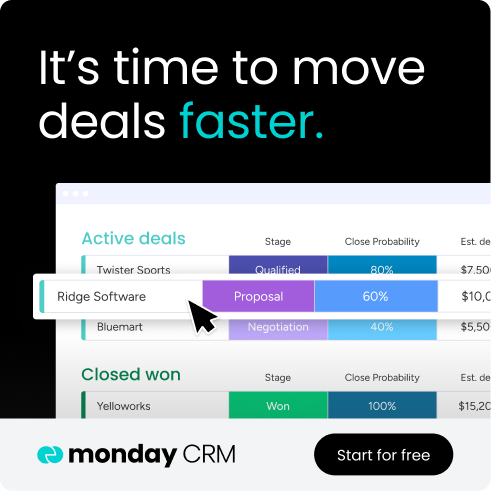Acquiring a new customer takes time, effort, and resources — from campaigns and negotiations to closing the deal. If every customer walked away after one purchase, you’d be stuck in an endless loop of chasing new leads.
That’s why customer retention matters. Loyal, satisfied customers form the foundation of sustainable growth, whether through subscriptions or repeat purchases.
In this guide, you’ll learn what customer retention is, how to measure it, and proven strategies to keep customers engaged. We’ll also explore tools like monday CRM that use automation and AI to make retention easier and more effective.
Try monday CRMWhat is customer retention and why does it matter?
Customer retention is an organization’s ability to retain its customers over a time period. The goal with customer retention is to keep clients engaged and satisfied so that loyalty is built over time. Growth-minded businesses will have customer retention strategies in place to ensure that they keep their existing clients to secure long-term revenue.
It’s easy to think that customer retention is about avoiding customers leaving your business, but in reality, it’s more than that.
Customer retention focuses on curating high-quality experiences that build trust and develop loyalty so that your customers want to stick around. This can be done through customer service, onboarding, or adding additional value to the products and services your business offers.
Retention vs. acquisition: Which is more important?
Many businesses will find themselves asking whether it’s more feasible to focus on retaining existing customers or acquiring new ones, when in reality, both are important. It’s widely accepted that retaining customers costs less than acquiring new ones, but that doesn’t mean that your sales team’s entire focus should shift to customer retention. Successful businesses balance both. Customer retention is essential for maintaining stable revenue over time, while customer acquisition helps companies expand.
Here are some of the key benefits of prioritizing customer retention:
- Lower costs: It’s much cheaper to retain an existing customer than to acquire a new one.
- Higher lifetime value: Loyal customers spend more over time and are less price-sensitive.
- Predictable revenue: Consistent repeat purchases create stability in cash flow.
- Word-of-mouth growth: Retained customers often recommend your brand to others.
- Competitive advantage: High retention rates signal trust and satisfaction, making it harder for competitors to lure customers away.
Key factors affecting customer retention
What makes customers leave, and what helps them stay? There isn’t a one-size-fits-all answer to this question, but it can help to understand the specific factors that affect a customer’s decision. Below, we’ll look at some of the most common factors that have an impact on customer retention.
Quality of your product or service
First and foremost, you need to offer a high-quality product that meets your customers’ needs. When a customer has a positive experience with your company’s product or service, they’ll be more likely to make a repeat purchase.
Pricing and value
After confirming that your product meets their needs, customers also want to feel like they’re getting both competitive pricing and value for their dollar. Aside from offering competitive pricing, it’s important to highlight the value your customer receives from your company by showing customers how your product meets their needs and shining a light on positive case studies and user feedback.
Loyalty incentives
It’s important to make repeat customers feel like you appreciate their business. Loyalty programs can incentivize customers to continue engaging with your brand and make additional purchases. Additionally, personalized loyalty perks and targeted offers can make customers feel like you understand and appreciate them.
Customer service
Your business’s customer service needs to be helpful, quick, and personalized to make customers feel confident that you can solve their problems. Stand out from the competition with personalized support that makes your customers feel like you’re rolling out the red carpet every time they have an issue or an inquiry.
Convenience and ease of use
Even if your product or service meets their needs, is at the right price point, and your customer service team has been hyper-responsive, your customer still needs to feel like interacting with your business and product is easy. Whether through quick delivery, implementation, or an easy-to-use interface, don’t underestimate the importance of convenience when it comes to retaining clients.
Emotional connections
When you put your customers’ needs first and invest in building a community around your business, your clients will feel like they’re a part of something rather than just another number, which is more likely to make them trust your company and remain loyal.
How to measure customer retention: rates & formulas
Unlike some other business strategies, customer retention has a tried and true formula that companies can use to track how well they’re keeping their customers. There are also other metrics to calculate and monitor to assess the overall health of your sales funnel and customer satisfaction efforts.
To calculate customer retention and churn rates, you’ll need some key figures:
- E = the number of customers at the end of a given period
- N = the number of customers added within a given period
- S = the number of customers at the start of a given period
How to calculate customer retention rate (CRR)
By calculating your customer retention rate over a set period of time, you can understand whether your team is doing enough to keep existing clients or if they’re scrambling to make up for losses by acquiring new clients.
The CRR formula looks like this:
CRR = ((E – N) ÷ S) x 100
How to calculate customer churn rate (CCR)
Your CCR reflects the percentage of customers your business lost over a period of time. The formula for this is:
CCR = ((S – E) ÷ S) x 100
How to calculate customer lifetime value (CLV)
Customer lifetime value is the total revenue that you can reasonably expect to get from a single customer throughout the relationship. There are many acronyms for this metric, including CLV, LTV, and CLTV, and it can help you pinpoint particularly loyal customers who would make great brand evangelists.
To find your CLV, you first need to calculate Customer Value.
Customer Value = (Average Purchase Price) x (Average Number of Purchases)
CLV = (Customer Value) x (Average Customer Lifespan)
How to calculate purchase frequency
Tracking purchase frequency will help you understand how often customers make return purchases in a predetermined period of time. Here’s how it can be calculated:
Purchase Frequency Rate = Total Number of Orders ÷ Number of Unique Customers
8 strategies and best practices to increase customer retention
According to McKinsey, businesses need to acquire three new customers just to make up for the loss of one. That’s a lot of extra work for your sales team that could have been focused on customer retention. Let’s look at some key strategies and best practices companies can employ to increase retention so that your customers stay happier for longer.
1. Offer proactive omnichannel support
Customers want to feel seen, heard, and supported on the channels they use. This is why it’s essential to craft an omnichannel strategy that delivers a seamless customer experience.
The approach for omnichannel support also needs to be proactive. For example, you may want to reach out directly to a customer who’s made a recent purchase by email to get feedback, yet still give them the flexibility to ask questions and get support through a chatbot on your website.
2. Personalize customer interactions
The data you collect in a system like a CRM can help you personalize customer experiences. By learning more about customer behavior, preferences, and tracking past interactions and purchases, it’s easier to tailor offers, communication, and recommendations to what a customer wants.
Plus, AI tools in your CRM can suggest personalized messaging or product recommendations automatically, saving service teams hours of manual work. For example, after a customer subscribes to your software, you can automate sending an email to see if they need help understanding features to make the most of their purchase.
3. Make decisions based on data
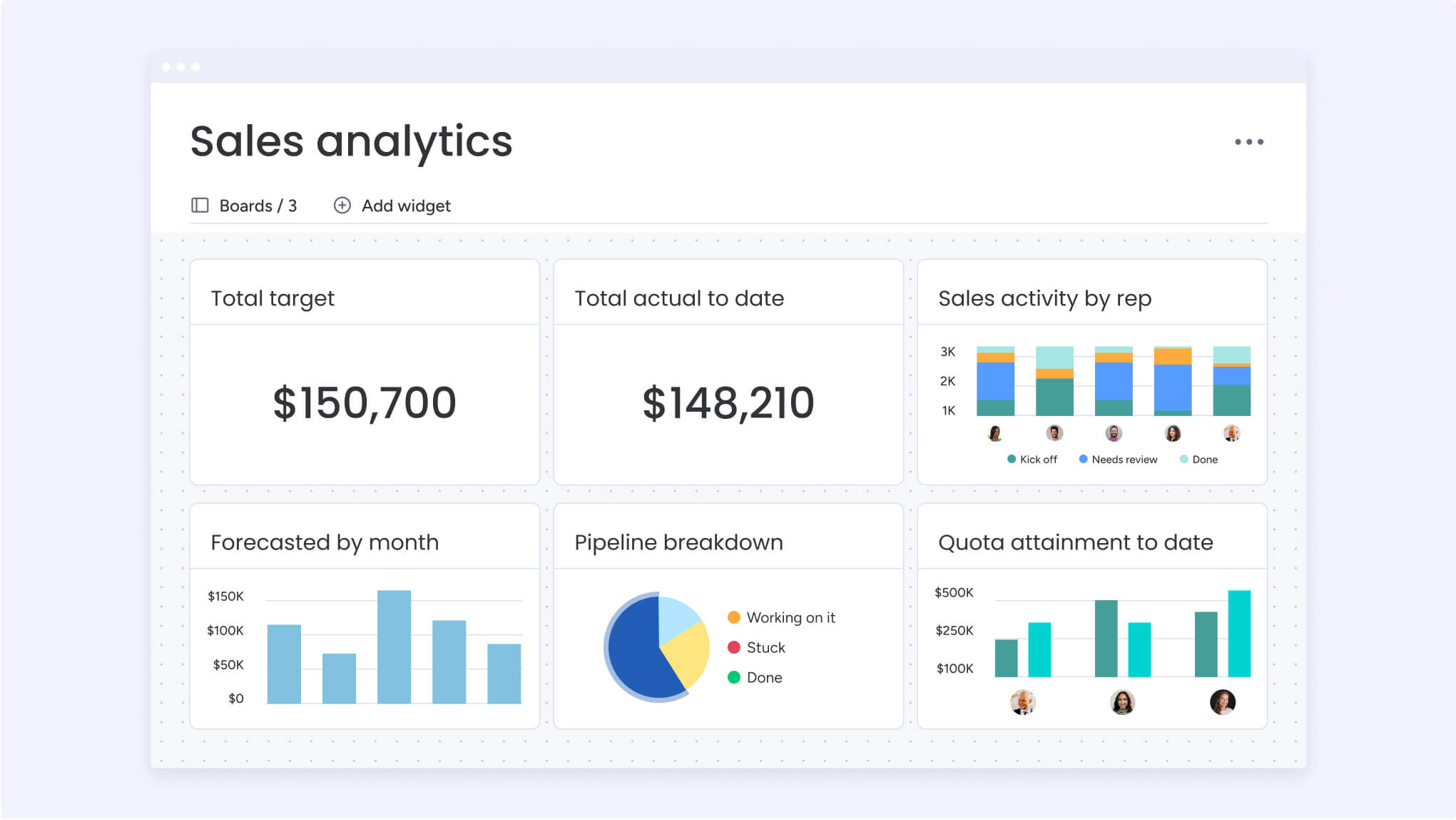
If you listen carefully, data will tell you everything you need to know about your customer, and AI analytics can surface patterns in sentiment or purchasing behavior that humans might miss, helping you intervene before churn happens.
Whether through a solution like monday CRM or a separate analytics platform, make sure you’re set up to get actionable and relevant insights on your customer base. Some types of data you should look for include:
- Behavior, including customer engagement levels
- Customer sentiment from previous interactions
- Forecasts that tell you the likelihood of a customer converting
The data you collect will give you a strong foundation on how to craft messaging that resonates and will also help you make important decisions. By analyzing behavior and sentiment, you can also step in when it looks like a customer is at risk of leaving your business.
Try monday CRM4. Segment customers for better targeting
You don’t want to annoy existing customers with content that’s not relevant to them. While you may already be segmenting your leads, you also want to segment your customers based on preferences, demographics, or past purchases. With AI, you can dynamically update customer segments as behavior changes, ensuring campaigns always reach the right audience.
By segmenting existing customers, you can create targeted marketing content that’s relevant to where they are now in the sales funnel. As an example, while you may have a campaign running with a promotion to sign up for your service, this isn’t relevant to long-term customers, so instead, you can create a separate campaign to upsell or cross-sell additional services.
5. Collect data from churned customers
Despite all your best efforts, it’s inevitable that some customers will leave. The goal is to discover why past customers moved on to uncover possible problems in your sales process.
Getting feedback from lost customers is tricky. You can try reaching them when they are about to churn or right after. Here are a few ways you can collect feedback from churned customers:
- Use an exit survey or poll to ask them about their experience
- Send out interview requests to clearly understand why they’re leaving
- Trigger automatic feedback forms as soon as a customer cancels
The responses you receive will have valuable insights that you can take action on. Now, AI survey analysis tools can quickly cluster responses to highlight the most common reasons customers leave.
Here’s a great example of a short exit survey from Canva that captures attention, and provides the company with important data:
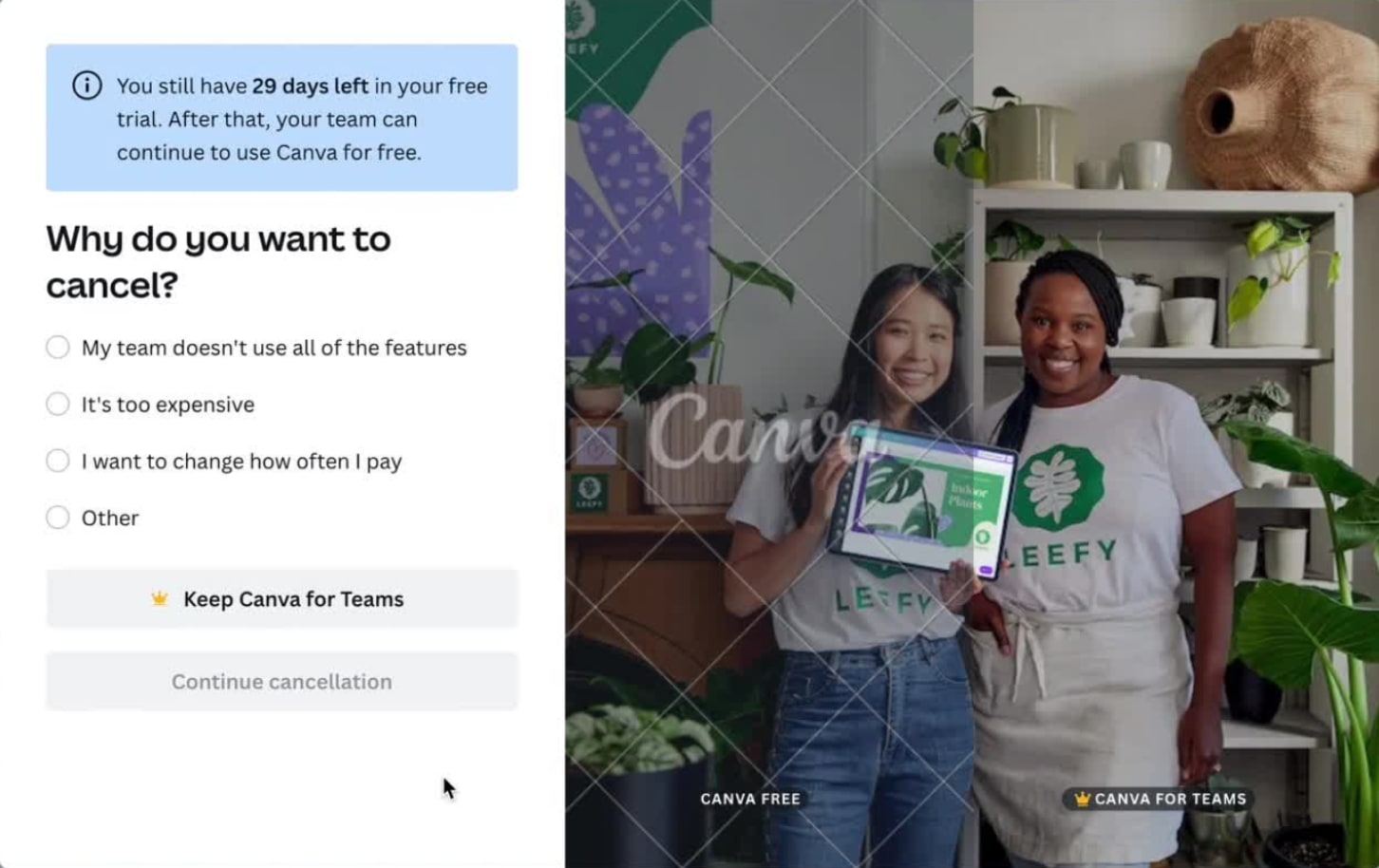
6. Build a consistent brand experience
Customers expect consistency across every touchpoint with your brand. Whether they’re browsing your website, visiting your physical store, or interacting with your social media, the experience should feel cohesive and aligned with your brand values. This means maintaining consistent messaging, visual elements, and service quality across all channels.
Apple is a prime example of a consistent brand experience in action. Not only is the brand’s minimalist design immediately recognizable, but the experience of interacting with the company remains consistent whether a customer is shopping in an Apple Store or browsing the website. This consistency builds a sense of familiarity over time, reinforcing a brand’s identity and creating a seamless experience that builds customer loyalty and trust.
7. Train and empower teams on service practices
Your customer service team is often the face of your company, so investing in training them is crucial for retention. Regular training sessions should cover product knowledge, but also soft skills like active listening, empathy, and conflict resolution. Additionally, make sure your team understands your customer retention goals and how their role impacts the bigger picture.
When team members feel empowered to go above and beyond for customers, they’re more likely to create positive experiences that keep customers coming back. A famous example of this is The Ritz-Carlton hotel chain with its $2,000 rule. This rule empowers every employee to spend up to $2,000 per guest to resolve issues and create memorable experiences without needing manager approval. This level of employee empowerment leads to quick and creative resolutions and demonstrates a genuine commitment to customer satisfaction.
8. Incentivize customer loyalty
Rewarding repeat business encourages continued engagement and strengthens the bond between customer and brand. Even simple point systems or tiered benefits can be effective, as long as rewards genuinely appeal to your audience — think exclusive discounts, early access to products, or free shipping.
Incentivization can also extend to referral programs or premium service tiers, turning loyal customers into active brand advocates.
Customer retention programs and costs
Retention programs — like loyalty rewards, tiered memberships, and referral incentives — give customers tangible reasons to stay engaged. The most successful programs go beyond generic discounts and offer experiences that feel personal and valuable.
For example, Starbucks Rewards uses points and gamification to encourage repeat purchases for its 75 million global members. In fact, loyalty members spend 3X more than non-members and 41% of U.S. sales are attributed to loyalty members.
AI-driven loyalty tools can strengthen these efforts by recommending perks tailored to individual behavior, automatically adjusting tiers, and predicting which rewards will have the highest engagement. This not only improves customer satisfaction but also helps companies avoid wasting resources on perks that don’t resonate.
The cost of customer retention
Every retention initiative comes with costs — from technology investments (CRM systems, loyalty software) to ongoing expenses like reward fulfillment, training service teams, and running feedback programs. However, these costs are typically far lower than customer acquisition campaigns, which often require heavy advertising spend.
According to data from Recurly, the average annual churn rate for a subscription company is 1% to 5%, and a 4% monthly churn rate is considered a good benchmark. This underscores why most businesses view retention costs as a long-term investment rather than an expense. By carefully balancing program scope with customer value, companies can maximize return while keeping budgets in check.
Customer retention automation tools to consider
You don’t need to adopt every type of tool to make an impact on your company’s customer retention. Focusing on the right systems and workflow automations can already start making a difference in instilling more customer trust and loyalty. Here are some high-impact automation tools we recommend starting with.
- Customer service portal: Make it simple for customers to submit inquiries and get responses from your customer service team. You can also create a personalized self-help portal with tailored guides, FAQs, and onboarding materials.
- Data analytics tools: You should be able to automate data analytics to get reports and insights on customer churn rate, purchase value, and other metrics that help you identify customer satisfaction levels in real-time.
- Survey and feedback forms: Use customer retention software to create automated feedback cycles after a customer completes a purchase. Send surveys or feedback requests so that you’re constantly getting data on what’s working and what can be improved so you can implement changes that deepen customer satisfaction.
- Messaging systems: Employ various messaging platforms so that you can be available to customers on different platforms, such as social media, a chatbot on your website, emails, and others.
- Personalization tools: Use personalization tools to gather specific data on each customer so that you can tailor interactions, deliver more relevant customer support, and create memorable experiences your customers will appreciate.
How can CRM systems assist in retention?
Adopting different customer retention tools can be messy, especially if you’re trying to get them all to work together. Your best bet to increase customer retention and automate workflows that improve trust and loyalty is using a CRM system that does it all. A CRM for customer retention often comes packed with many of the tools we listed above as default features.
A reliable solution, like monday CRM, can help teams unify communications, track essential data, and personalize messaging and marketing assets all in one place. Additionally, third-party apps can be added as integrations to avoid siloed data and ensure critical workflows and information are synced.
How monday CRM supports scalable customer retention
To put the above customer retention tips into practice, adopt an AI-powered CRM system that helps you automate customer relationship management and post-sales activities in one centralized place. As an all-in-one solution, monday CRM allows you to monitor metrics, visualize the results of all customer touchpoints, and automate workflows to implement consistent retention practices.
Not only does monday CRM help you automate retention strategies, but it does so with the help of advanced artificial intelligence algorithms. Packed with AI features, monday CRM empowers teams to make smarter decisions based on data so that they can keep their customers engaged and loyal.
The solution’s AI capabilities remove the burden of manually checking in on clients so that service and sales teams can spread their focus equally on building relationships and acquiring new customers.
Here’s a look at some of the core features that make monday CRM a great choice for maintaining successful customer retention strategies.
Generative AI to personalize interactions
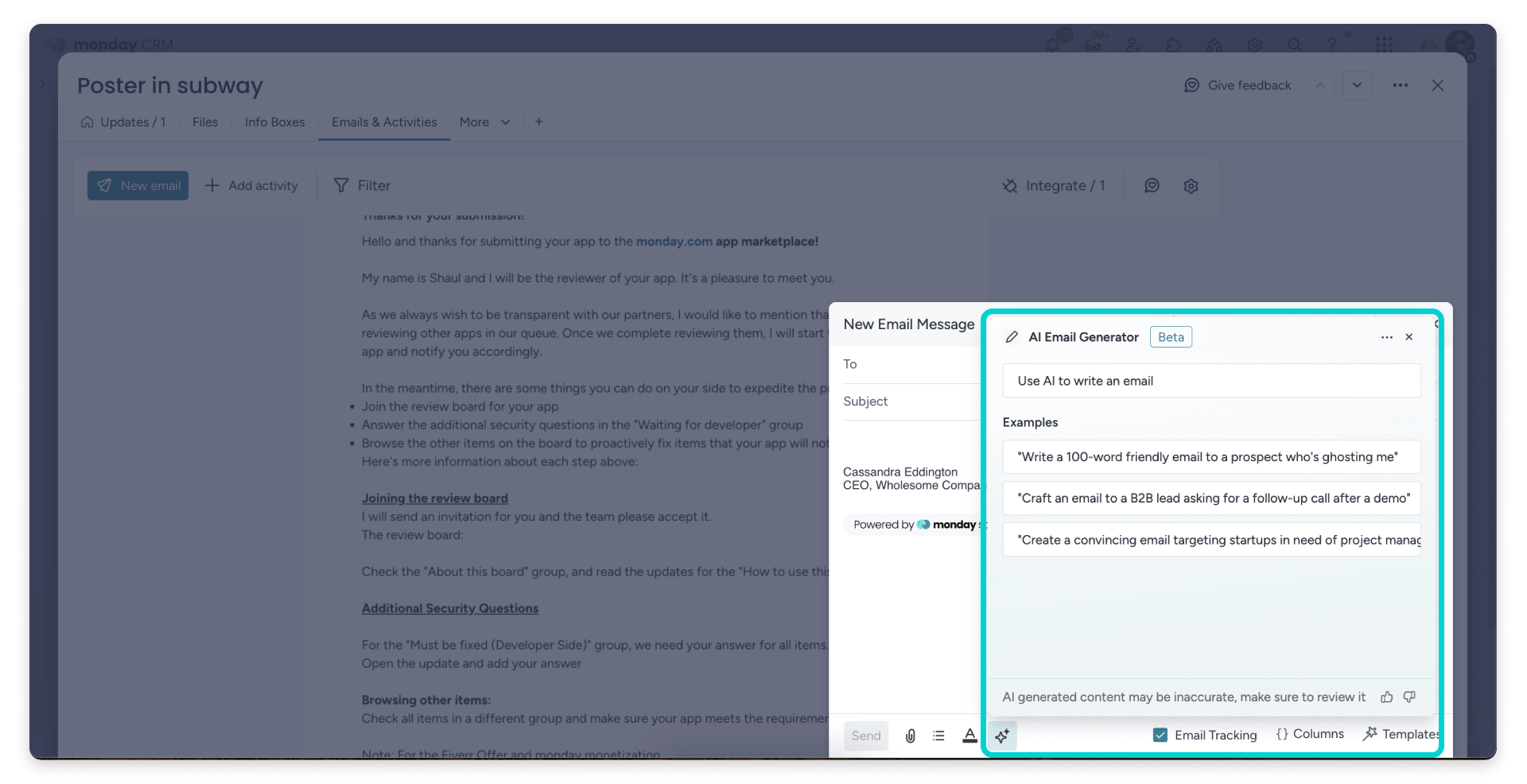
Personalizing messages for each customer is time-consuming, but with monday CRM, you can create tailored messages in seconds with data from a customer’s profile. Send custom emails and create targeted offers based on a customer’s previous interactions, purchases, and behavior to create content and messages that resonate with your clients.
Dashboards and real-time AI analytics
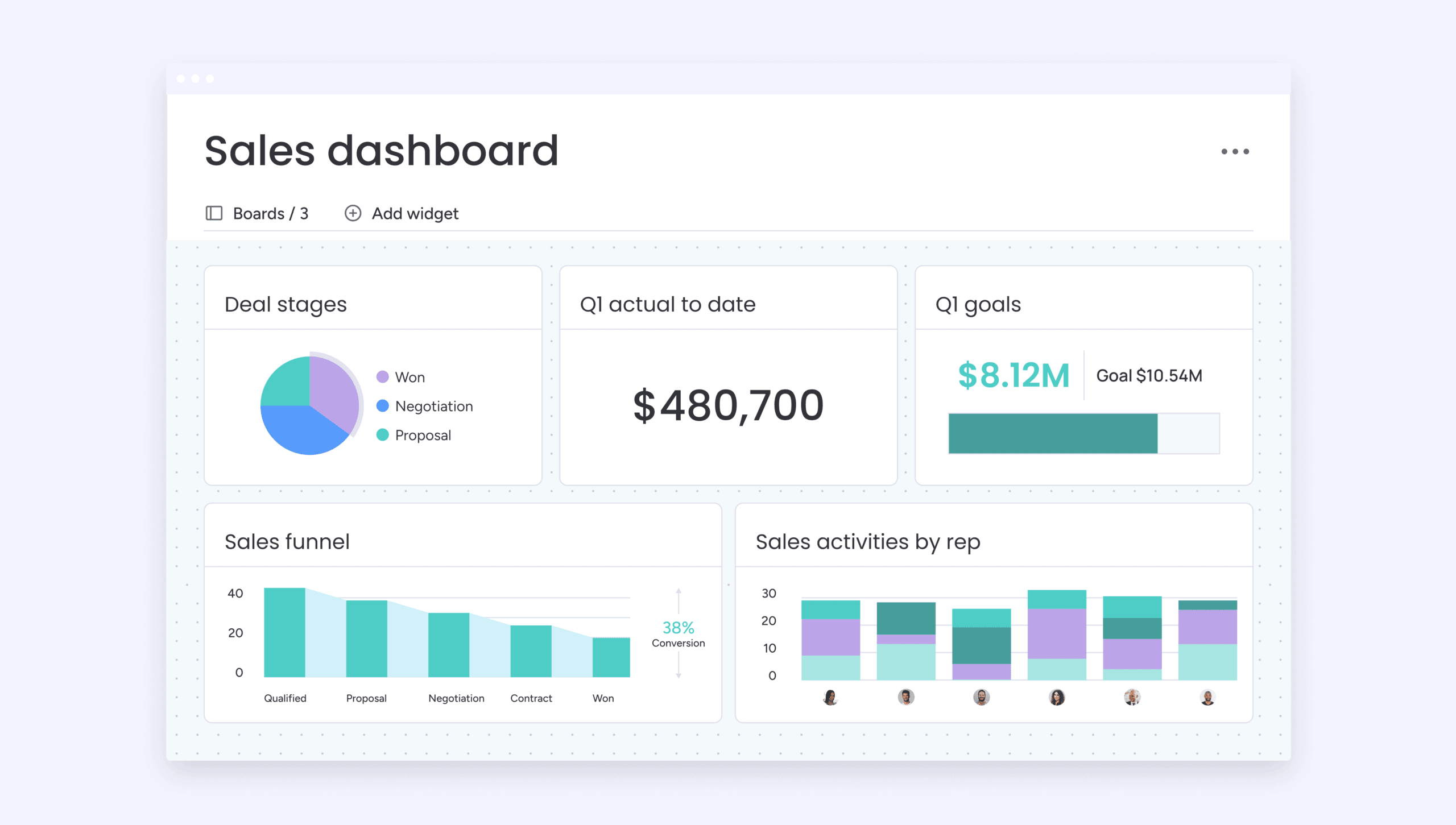
Stay on top of what’s really happening in your business with AI-driven analytics and detailed dashboards. Customize your reports and dashboards to give you real-time insights on customer behavior, churn rates, or other metrics you choose, so your team is always aware of the health of your sales cycle and the average customer behavior.
Unified omnichannel communication
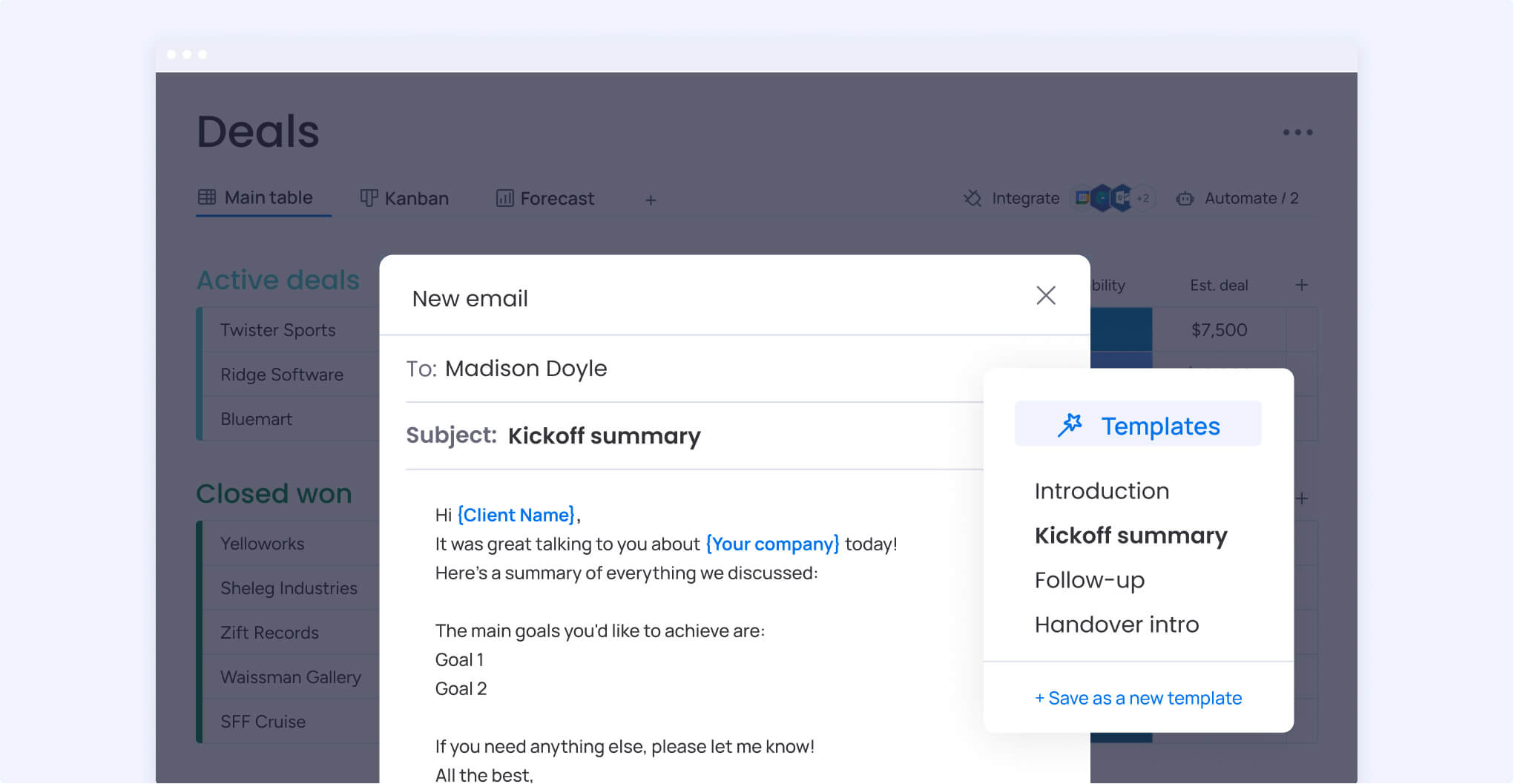
Keep all communications in one unified space, whether your customers reach out by email, calls, or on social media. By storing all messaging in one place, all agents can stay aware of previous interactions. Not only that, but with 200+ app integrations, you can sync communications from multiple platforms to prevent mixed messages and crossed wires.
AI-powered customer sentiment analysis
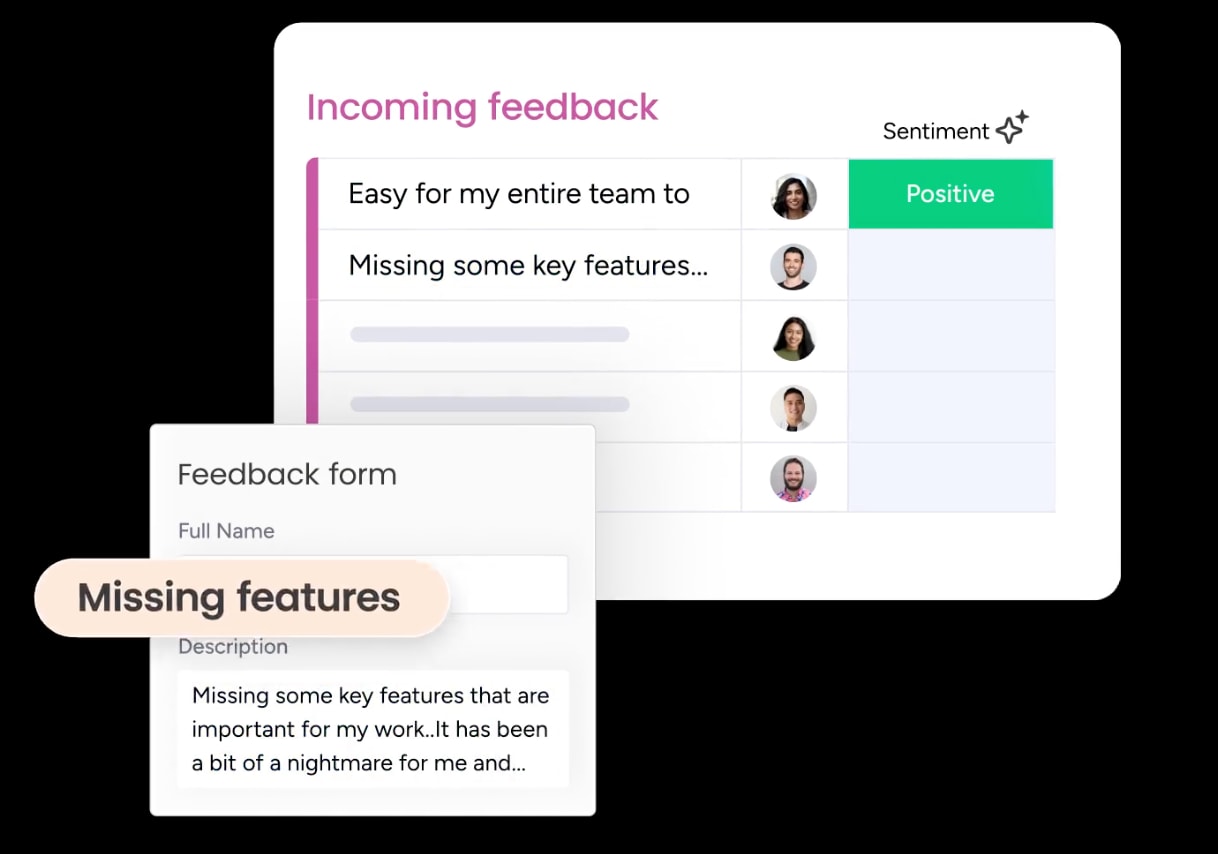
Drill down into how a customer really feels about your company with monday CRM’s AI-powered sentiment analysis feature. With this feature, you can detect a customer’s sentiment from email messages, call transcripts, or meeting summaries so that you can stay one step ahead and intervene if a customer feels negatively and is at risk of leaving.
Unlock the secret to sustainable customer growth
Driving customer retention will allow your business to stand out among the competition, but it’s easier said than done. Teams need to stay on top of tracking and managing every aspect of the sales cycle, customer data, and communications in one centralized place.
Adopting an all-encompassing solution like monday CRM can help you aggregate all these processes and make sense of complex data so that your team can focus on nurturing client relationships and providing a memorable customer experience at every touchpoint.
Try monday CRMFAQs
What is a good customer retention rate?
A “good” customer retention rate varies by industry, but generally, anything above 80% annually is considered strong. Subscription businesses often aim higher, while retail and e-commerce may fall slightly lower due to natural customer churn. The key is to compare your retention rate to industry benchmarks and your own historical data to see if you’re improving over time.
How can businesses improve customer retention rates?
Businesses can improve retention through proactive customer support, personalized experiences, loyalty programs, consistent service quality, and regular feedback collection, among other strategies. It’s a good idea to train your service team to exceed expectations and address issues quickly. Businesses can also improve retention by segmenting customers for targeted communication and turning to reliable data analytics to identify at-risk customers.
How is customer loyalty a factor in retention?
Customer loyalty directly impacts retention by creating emotional connections that go beyond transactional relationships. Loyal customers are less price-sensitive, more forgiving of mistakes, and actively choose your brand over competitors. Not only that, but they can also go above and beyond by referring your business to others as well as generating repeat business. Loyal customers typically have higher lifetime values than one-time purchasers.
What is the cost of customer retention?
Customer retention costs vary by industry and the size of your business. When calculating the cost of retaining customers, it’s important to include costs from all strategies, including loyalty program expenses, customer service operations, personalization technology, staff training, and retention marketing campaigns. That said, retention costs are typically lower than the cost of acquiring new customers, making it a cost-effective investment with strong ROI.
Why is customer retention important for a business?
Customer retention is crucial because retained customers generate more revenue over time, cost less than acquisition, and provide predictable income streams. They also offer valuable feedback, create positive word-of-mouth marketing, and demonstrate business stability to investors. High customer retention rates indicate strong product-market fit and sustainable growth.
 Get started
Get started 


